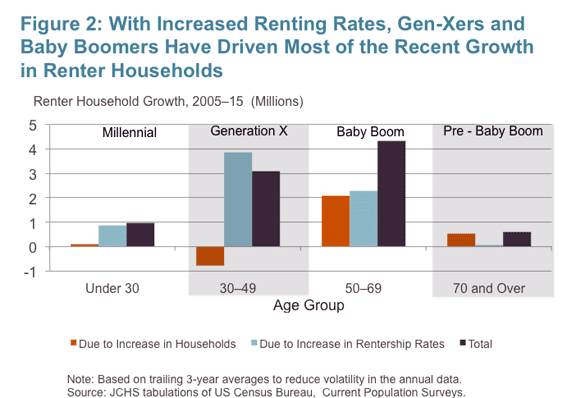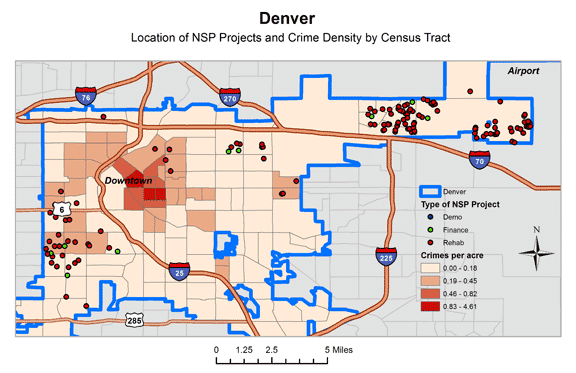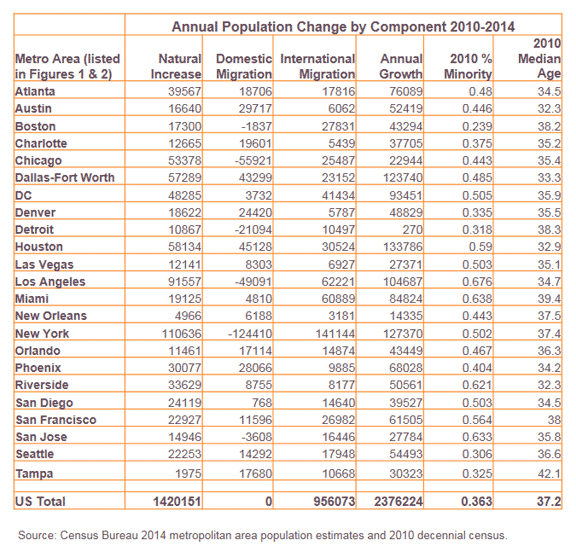 |
Adam Tanaka
JCHS Meyer Fellow |
This post is cross posted from a series that our
colleagues at the Ash Center for
Democratic Governance and Innovation are doing on affordable housing
as a challenge to the health of American democracy, and in particular local democracy
in the United States. The series, edited by Harvard Kennedy School Assistant
Professor Quinton Mayne, is part of the Ash Center’s Challenges to Democracy series,
a two-year public dialogue inviting leaders in thought and practice to name our
greatest challenges and explore promising solutions.
As part of this series, Adam Tanaka explored the ways in which housing shortages in expensive global cities
are leading to a redefinition of affordability, both for low- and middle-income
residents. Population and productivity growth, coupled with increasing income
inequality, is contributing to a pressure-cooker housing market in which supply
is falling far short of demand. As a result, public authorities are finding new
ways to partner with private developers to try and meet demand for below-market
housing. Tanaka sat down with private developers who are playing an important
and telling role in the delivery and management of affordable housing.
For this interview in the series, Tanaka
traveled to New York City to interview Rick Gropper of L+M Development
Partners, a private affordable housing development company with thirty years of
experience in New York. Their conversation reveals some of the political
challenges still facing developers operating in this field, as well as new
opportunities for innovation across the public-private divide.
New York City has a long tradition of innovation in affordable housing. From
building the country’s
first
public housing project, to establishing its
longest-running
program of rent control, to experimenting with tax credits that influenced
the adoption of the federal Low Income Housing Tax Credit, the city has a
strong legacy of public intervention in the housing market.
New York cannot rest on its laurels, however, as a number of trends continue
to threaten the city’s affordability. Most obviously, the city’s population is
growing, adding considerable stress to the housing stock. Following dramatic
population decline and widespread abandonment in the 1970s, the city has
rebounded,
reaching
an all-time high of 8.5 million residents in 2014. The city’s housing
market, however, has failed to keep pace, with a shortage of new development
driving up housing costs to the point that the median sales price of a home in
Manhattan is
just
shy of $1 million. A surge in foreign investment has added further stress
to the system, as a growing number of condominiums sit empty, purchased as
assets rather than homes. As the real estate market surges, the “funding gap”
between market and affordable rents grows, requiring ever larger subsidies to
develop new affordable homes.
In theory, the city’s
existing affordable housing stock is supposed
to be unaffected by these market trends. Programs like public housing, rent
control, and Section 8 vouchers were purpose-built to protect low-income
families from a housing market out of their reach, providing long-term
affordability through a variety of methods. In reality, however, a number of
programmatic impediments have begun to erode the city’s affordable housing
stock. This includes the
expiration
of affordability requirements for many housing developments built in the
1970s and 1980s as well as the removal of units from rent regulation through a
technicality known as
“luxury
decontrol.” It is estimated that over the course of Mayor Bill de Blasio’s
first term in office,
45,000
housing units will exit affordability, allowing landlords to charge
market-rate rents for the first time if no new subsidies are put in place.
Even public housing—owned and operated by the public sector and thus
theoretically the most secure form of affordable housing—is threatened by an
increasing lack of federal money for both daily operations and long-overdue
capital improvements. As the country’s largest housing authority, the New York
City Housing Authority (NYCHA) has been particularly hard-hit by this federal
shortfall. In 2014, the agency suffered from
a
$77 million budget deficit and had estimated capital needs totaling $18 billion,
mostly in structural improvements to buildings, many of which are over fifty
years old. As such, NYCHA officials are actively exploring new ways to generate
revenues for the agency and close the funding gap. One strategy is to
lease
under-utilized land adjacent to public housing to private developers for new
construction. Another is to restructure the funding for public housing to
tap new federal sources such as the
Rental Assistance
Demonstration program.
A third method, which this interview explores in detail, involves the
Housing Authority partnering with for-profit developers to access both private
capital and federal funds only available to private applicants. In February
2015, NYCHA formed a public-private partnership with two private development
companies, L+M Development Partners and BFC Partners, to revitalize a
particularly distressed subset of its portfolio: six project-based Section 8
developments housing over 2,000 residents across the Bronx, Manhattan, and
Brooklyn. The project-based Section 8 program, initiated in the early 1970s by
the Nixon administration, was an operating subsidy mostly intended for use by
private developers. However, a number of Section 8 developments fell into the
housing authority’s portfolio during the city’s fiscal crisis in the mid-1970s,
when NYCHA was better capitalized than the city itself.
Queensbridge Houses, largest public housing development in US (source).
Now that this situation has reversed, NYCHA is exploring new ways to
generate revenues not only for its Section 8 projects, but also for its general
portfolio. Transferring 50% ownership of these developments to private hands
opens the door to tax-exempt bond financing and tax credits, sources generally
unavailable to housing authorities. The private partners, meanwhile, benefit
from Mark-Up-To-Market contracts from the Department of Housing and Urban
Development (HUD), which compensate landlords for the difference between 30% of
tenant incomes and market rents.
Of course, even this partial privatization of public housing has generated
substantial controversy amongst tenants, local politicians, and housing
advocates. To learn more about the politics behind this proposed deal, the Ash
Center spoke to Rick Gropper at L+M Development Partners. One of the city’s
foremost private affordable housing development companies, L+M’s evolution over
the past thirty years epitomizes the growing professionalization of the sector
as a whole. The conversation with Gropper reveals some of the political
challenges still facing developers operating in this field, as well as new
opportunities for innovation across the public-private divide.
Adam Tanaka: Could you describe L+M’s position within the affordable
housing landscape in New York City?
Rick Gropper: L+M has been around for about thirty years. The first projects
that we did were under the Vacant Building Program, where the city acquired
buildings that were in tax foreclosure. These buildings were vacant, and many
of them were shells. The city then transferred them to private developers for a
dollar. Prospective owners would bid down the rents. One would say: “I can do
this job and I’ll charge the residents $500 a month.” Another would say: “I can
do $450 a month.” Whoever came up with the financial structure that charged the
least rent would get the building.
Then the Tax Act of 1986 introduced a new financial mechanism, the Low
Income Housing Tax Credit (LIHTC). The founders of L+M figured out how to
syndicate tax credits and place tax-exempt bonds, and they used that financing
to charge residents even less for rent. That was the genesis of L+M, working
with city and state agencies to gut-renovate buildings across the city.
As the affordable housing industry matured, the company moved to new
construction, working with the city to subsidize projects on city-owned land.
The city had a lot of land because they had demolished buildings for a variety
of reasons. The Department of Housing Preservation and Development, the city’s
housing agency, would offer different development sites for a dollar, and would
then work with the developer to figure out how to finance them, whether it’s
tax-exempt bonds or tax credits or subsidy, or some combination of all three.
From the mid-1990s until today, L+M has been predominantly a developer of new
affordable housing. We’ve slowly gotten into some other things, such as new
construction of market-rate buildings, but most of our work is affordable
housing.
There’s been a lot of media attention recently on the expiration of
various affordable housing programs. Has L+M been involved in the refinancing
of housing developments to enhance their affordability?
Five or six years ago, a lot of the housing stock that was developed in the
late 1980s and early 1990s hit what’s known as the “Year 15,” which is the end
of the tax credit compliance period. When you’re working with Low Income
Housing Tax Credits, they’re delivered to the owner over a 10-year period, and
there’s a 15-year compliance period. Once that compliance period ends, you can
actually re-syndicate the tax credit properties. When you re-syndicate, you
extend the affordability for another 15 years. We have worked to extend
affordability in a number of areas facing market pressures, such as Harlem, the
East Village, Bushwick and Clinton Hill. When you re-syndicate a building, you
might put $40,000 into a unit for renovation, replacing roofs, common areas,
boilers, systems and technology changes over time. Being able to re-syndicate
and renovate is really important.
What factors do you think drove the city to start relying on the
private sector for affordable housing?
For a long time, the city used to build and finance new housing. That ended
in the 1970s. Now it’s very expensive for city agencies to build buildings.
That’s just not necessarily what they’re good at. When the private sector was
brought in, the city realized that they could get more housing built, do it
more efficiently and cost-effectively, and create units much more rapidly than
they could on their own. That said, it’s always a push and pull with the city.
As a private-sector developer, we’re making money on developer fees and cash
flow, and the optics of that can be a challenge, politically, for the city.
People are wondering, “Why are these private developers making money off of the
city?” In reality, we’re building buildings more effectively and efficiently
than the city would be able to do on their own. If it develops a project, the
city has to do it subject to all the public work rules that apply, which drives
up costs and timelines. In the private sector, we have an outstanding record of
delivering buildings on time, on budget, and safely.
With an increasing erosion of federal funding for public housing, do
you see housing authorities operating in a more entrepreneurial manner?
Housing authorities are already operating in a more entrepreneurial manner,
and that started at least five years ago, with the Rental Assistance
Demonstration Program (RAD). That program, initiated by the Department of
Housing and Urban Development (HUD), enabled housing authorities to bring in
private partners if they wanted to, or even finance buildings on their own.
With public housing contracts, it’s very difficult, if not impossible,
statutorily, to put debt on buildings. That’s a real challenge for NYCHA, which
has 170,000 units in various stages of disrepair and about $18 billion of
deferred maintenance. The only way that they’re going to generate enough
capital to renovate the buildings to a more sustainable standard is to partner
with the private sector and to use programs like RAD so that they can finance
their own buildings, generate capital, and reinvest either directly back into
the building they financed, or into their portfolio.
What stakeholders influenced the outcome of your joint partnership
with NYCHA? Did any political dynamic inform the outcome of the deal?
Whenever NYCHA partners with the private sector, there are a host of stakeholders
who become very skeptical. The mayor was on board and the various housing
agencies understood the urgency of the problem. But there was a whole other
cohort of stakeholders–residents, elected officials–who needed to be convinced.
So NYCHA spent a long time getting those people on board, assuring the
residents that there would be no rent increases or evictions. It was an
educational and outreach process.
Image of Saratoga Square, one of the developments undergoing partial privatization
The six sites are located in a wide array of neighborhoods.
Presumably this makes each project quite unique, not only financially, but also
politically. Can you speak to this variation?
Each property is subject to three levels of public involvement. First, the
residents and the tenant association (TA) president. Then the local
councilperson. From there, you have the bigger picture: the chair of the Public
Housing Committee of City Council, the Committee itself, and the Speaker. So in
each case, there were different concerns. The residents’ concerns were related
to the specific building. The elected official’s concerns related to the
specific climate of the City Council district. And then, on a broader scale,
the City Council committee raised issues on transparency, long-term
affordability and so forth.
In the East Village, at a property named Campos, it was a challenge to get
the local elected official on board, while residents and resident leaders were
in support of the deal. There’s a lot of development going on in the
neighborhood, and local residents are being displaced. The council-person was
skeptical that we might come in and build condos there, even though we can’t do
that without NYCHA’s permission. But because of what was happening in that
council district, the council-person was very protective. Anything that she
could have a say in, she was clamping down on.
Compare that to the property in the Bronx, where we had a TA president who
was very skeptical, and a local elected official who was less vocal against the
transaction. She knew L+M, knew what we had done in the past, and understood
the necessity of the transaction from a security and sustainability
perspective. In the Bronx, there was less concern that we were going to convert
the buildings to market-rate condos.
Can you explain how NYCHA will benefit from the partnership?
NYCHA will receive a series of payments. They received a partial payment of
the purchase price when we closed on the financing of the property. Then when
we stabilize the properties and convert to the permanent phase of financing,
they’ll receive the rest of the purchase price. They’ll also benefit from a
portion of the developer fee and ongoing cash flow. So, NYCHA’s received a big
payment up front that they’ve already reinvested into other properties and used
to close their budget gap for the first time in many years.
The transaction itself enabled the buildings to be renovated with about $80
million worth of hard cost, and NYCHA to take $250 million in purchase price
and put it back into their budget for whatever they see fit. We did that by
leveraging the mark-up-to-market HUD contracts, and using debt and tax credit
equity to combine into the financial structure for the deal.
From an ongoing perspective, NYCHA will receive half the developer fee and
then three quarters of the cash flow. There’s also a seller’s note that they
will be paid on. So there are a number of different buckets of proceeds that
NYCHA will receive, and they’ll be able to use it however they wish.
What kinds of “reasonable cause” can NYCHA cite to cancel the
contract with L+M and BFC? And what is the nature of the 30-year opt-out clause
governing the buildings?
NYCHA has a number of different rights in the joint venture. They are the
ultimate decision-makers in basically everything. We can’t sell the property;
we can’t convert to condos; we can’t really do anything without NYCHA signing
off on it. And we have no interest in doing that with these properties. Through
the deal we are receiving HUD contracts, which are very valuable and pay market
rents. NYCHA has a purchase option in 15 years and can take back the properties
if they want to. And then, at the end of the 30-year affordability period,
NYCHA is the ultimate decision-maker. They decide what happens at that point.
Most likely, we will do a similar transaction and extend the affordability
further.
Do you see this deal as providing a clue to the future of affordable
housing in New York?
We see this transaction as a model for the potential of public housing. We
can generate proceeds that NYCHA can use to reinvest in their portfolio. We
renovate their properties and manage them. And we do all of that in a more
efficient and effective manner than NYCHA can. It’s a public-private partnership
and a real joint venture with NYCHA in which NYCHA has decision-making
capability and can leverage the strength of the private sector in terms of what
they’re good at doing: building and managing housing.
There’s a way to do that effectively and in a real partnership where the
residents feel like their interests are protected, and from our perspective,
we’re making money off the property, which gives us an economic incentive to do
the right thing and reinvest money into the property and operate it well. As
the property does better, we do better.
Adam Tanaka is a Ph.D. student in urban planning at the Harvard Graduate
School of Design and a Meyer Fellow at Harvard’s Joint Center for Housing
Studies. His research focuses on housing policy and development in the
contemporary United States, drawing from the fields of political science, law,
urban planning, and real estate to develop methods for understanding and
improving urban housing provision.
Many thanks to Jessica Yager at the Furman Center for Real Estate and
Urban Policy for helping to arrange the interview.
Read more in the Challenges to Democracy series, including Adam Tanaka's posts.
Read the opening post to this series, which we cross-posted in April 2015.


































